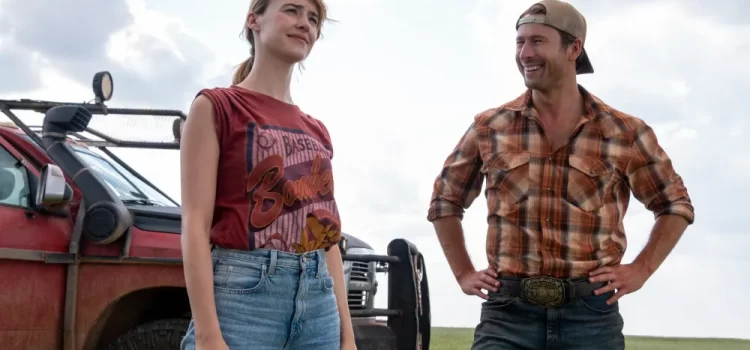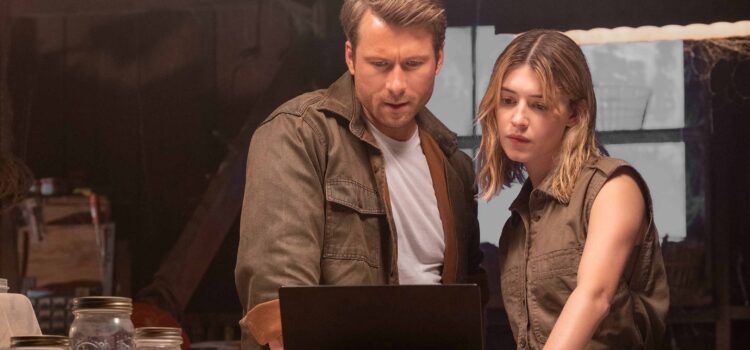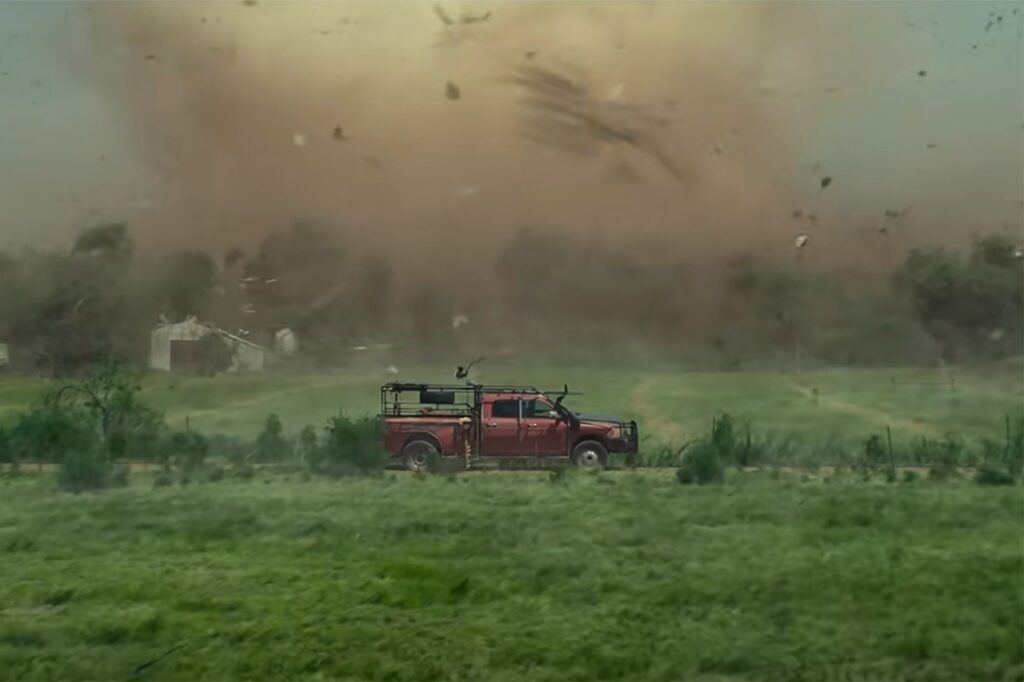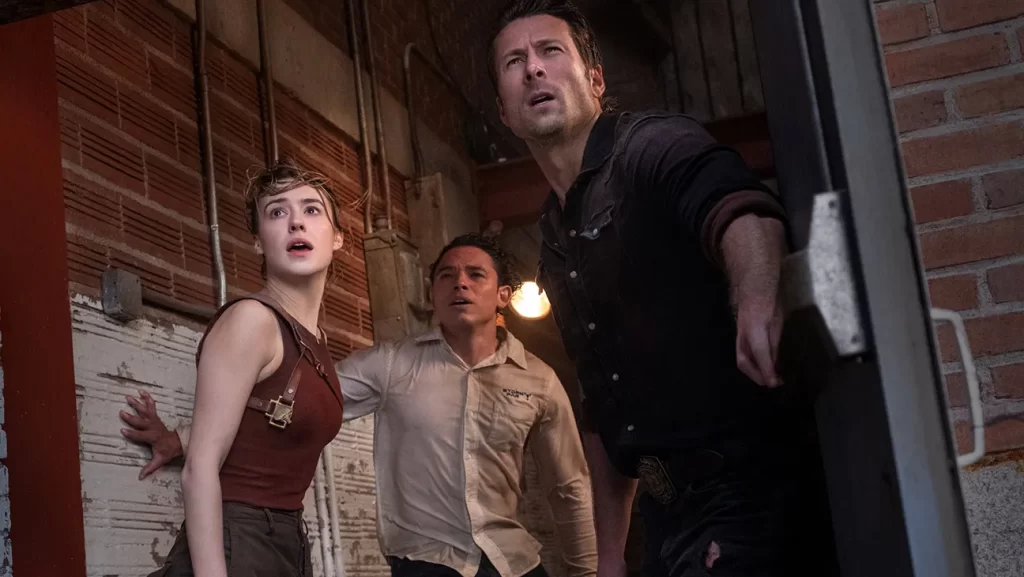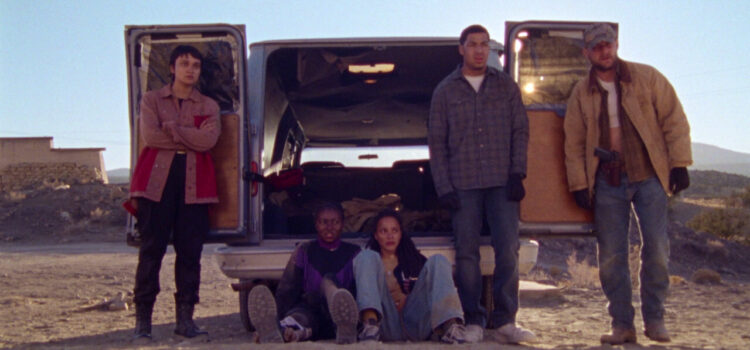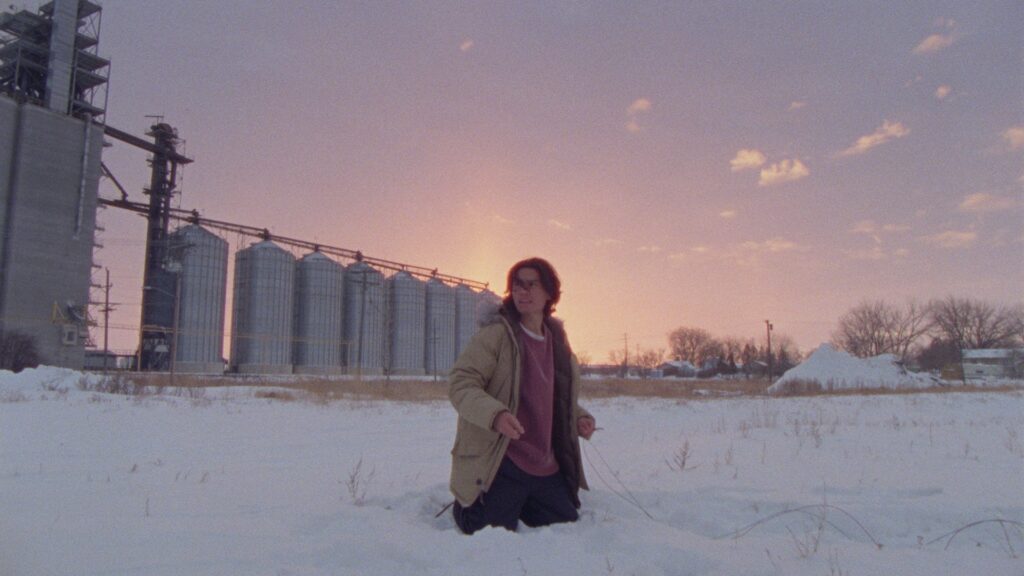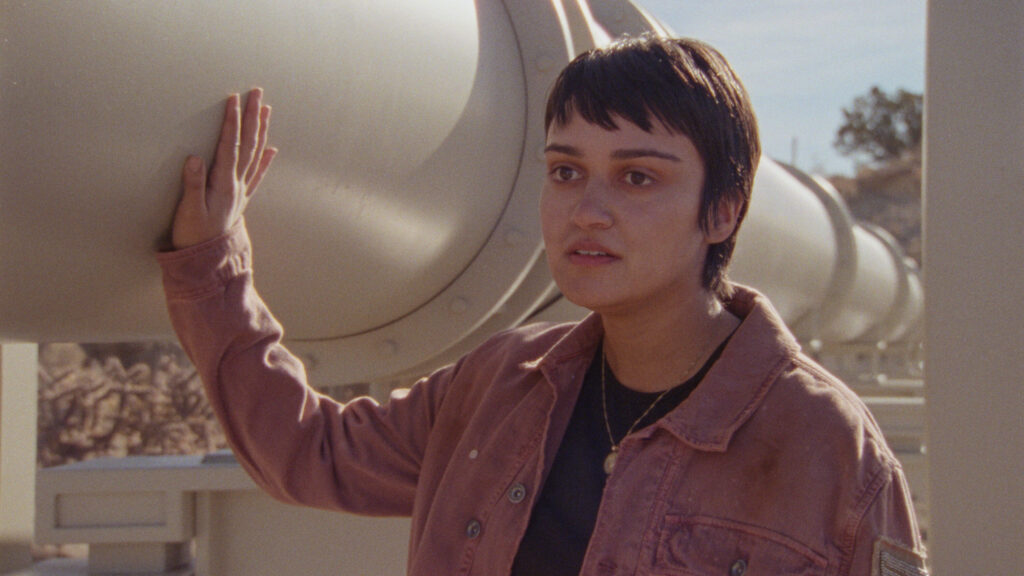By Alex McPherson
With chaotically fun set pieces and an enjoyable performance from Glen Powell, director Lee Isaac Chung’s “Twisters” seemingly checks off all the boxes for a summer blockbuster treat, but it doesn’t surpass the 1996 original.
Set in the same universe of Jan de Bont’s “Twister,” but featuring a different set of characters filling in similar archetypes as before, Chung’s film begins with a flashback showing a bright-eyed group of Oklahoma college students — led by Kate Cooper (Daisy Edgar-Jones) — storm-chasing with the ultimate goal of “taming” a tornado.
In a surprisingly dark turn of events, Kate and her squad misjudge the type of tornado they’re dealing with (it’s an F5, not an F1), and tragedy ensues. The twister claims the lives of three of the group, including Kate’s boyfriend, Jeb (Daryl McCormick), with only Kate and tech wiz Javi (Anthony Ramos) managing to survive the ordeal. Both Kate and Javi are mentally scarred, and Kate, wracked with guilt, vows to leave her storm-chasing behind.
Five years later, Kate works as a meteorologist in Manhattan, going about her days deflated and depressed. That is, until Javi shows up, urging her to join his team of scientists researching tornadoes in Oklahoma. Javi works for Storm Par, a mobile radar company that may or may not have shady motives beneath their “for the greater good” appearance.
He offers Kate a short-term position on the team. She reluctantly accepts, recognizing that extreme weather events are becoming increasingly common — but neither Kate nor any other character mentions climate change outright. Thus, she’s back in the field, tagging along with some straight-laced scientists (one played by future “Superman” actor David Corenswet) hunting down the weather phenomena that’s both her passion and trauma manifested.
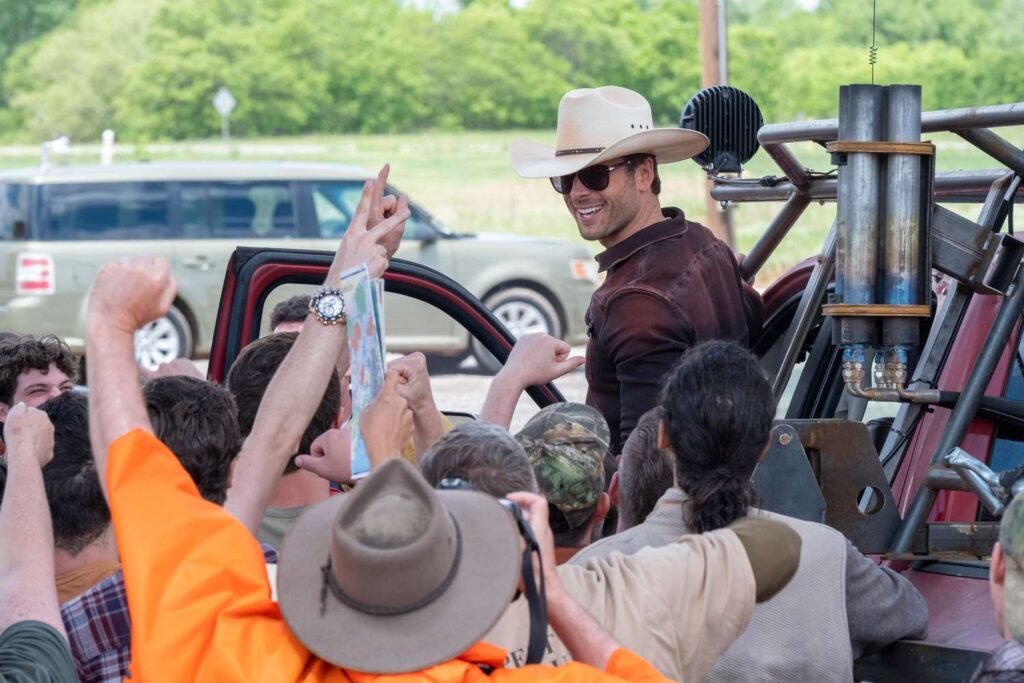
Also on-the-scene is professional “Tornado Wrangler” and YouTuber Tyler (Powell), a rambunctious chap running into danger for “views,” with country music blasting nonstop. He’s joined by a band of tech-savvy nerds played by Sasha Lane, Katy O’Brien, and Tunde Adebimpe, among others, including Harry Hadden-Paton as a clumsy British journalist whose main purpose is comedic relief and not much else.
As both parties compete to reach the tornadoes first, Kate and Tyler develop an inevitable will-they-won’t-they romance. Both must confront their pasts, doubts, and motivations as they seek to make a difference in the world, and in each other’s lives, as they spout quippy dialogue and survive catastrophic incidents thanks to their plot armor.
Indeed, “Twisters,” like “Twister” before it, isn’t trying to be high art. But Chung, who directed 2020’s masterful “Minari,” still tries to inject pathos and stakes into the proceedings, tackling themes of trauma, rebirth, and corporate corruption amid the cheesiness and CGI-laden sequences of carnage.
It’s a tonal mishmash that doesn’t quite work in Chung’s favor. “Twisters” lacks the commitment to make any meaningful statements on the topics it brings up — which, notably and puzzlingly, does not include climate change — and awkwardly sandwiches sincere attempts at poignancy between the more cartoonish and “thrilling” moments we expect.
This is made all the more frustrating by the fact that Chung and screenwriter Mark L. Smith prove that they’re willing to address serious, albeit formulaic, ideas about managing trauma and capitalism’s nasty influence on morals. It turns out that the most important and obvious topic of all for this story — climate change — is too controversial for them.

To make matters worse, “Twisters” ultimately embraces the idea of “conquering” nature more than understanding it, further reducing its premise to popcorn fluff that, by actively resisting taking a stand on much of anything beyond convention, is frustratingly, distractingly out-of-touch with our current moment.
That’s not to say all is lost, though. There’s still individual moments in “Twisters” that pop, and Powell’s star power is more than enough to make the film entertaining on its own lesser merits.
Powell gives the film much-needed bursts of energy whenever he’s on screen, portraying a raucous individual who disguises his intelligence behind a rowdy, boyish veneer. With his well-sculpted physique and easy charisma, Powell steals the spotlight from Edgar-Jones who, to the film’s credit, portrays a strong, determined character in her own right, albeit one who seems to be in a completely different film from Tyler at certain points.
Kate is far less engaging to watch than Tyler, being saddled with a tragic backstory and comparatively bland personality. Edgar-Jones’ performance lacks impact as a result. The rest of the ensemble is uneven, with Ramos not quite being able to deliver Javi’s heavy-handed dialogue convincingly, and others are barely given enough time to register as fully-formed characters.
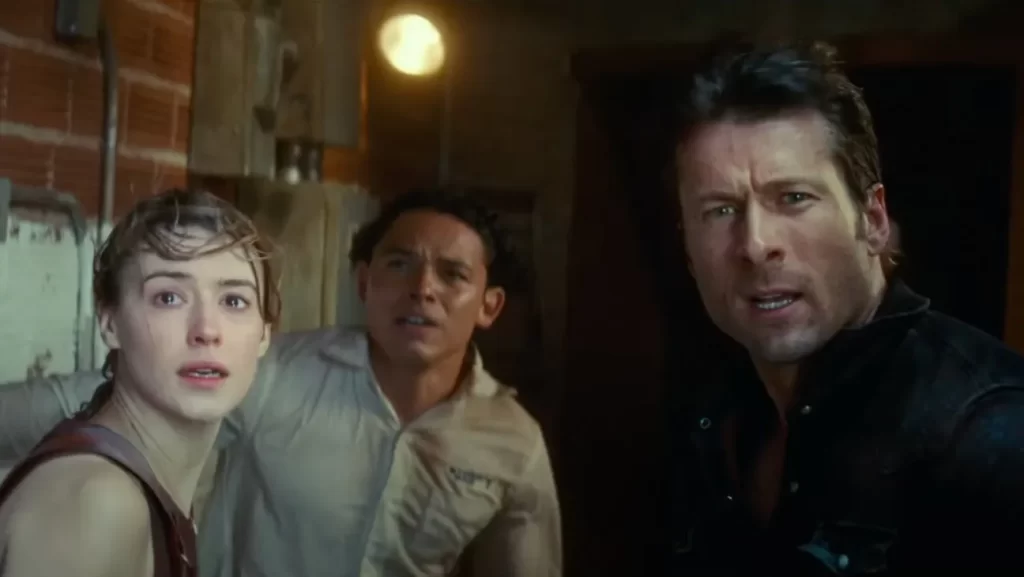
“Twisters” fares better in terms of pure production value, however. Cinematographer Dan Mindel artfully frames the Oklahoma prairies, even though there’s less dynamism to the camerawork here than de Bont’s previous effort.
Chung stages sequences of destruction effectively, especially in the opening minutes. He seems to take some glee in showing cars, buildings, and (usually unnamed) people being sucked up into their orbits. It’s loud, scary, and thrilling, for a while, but becomes repetitive as the film goes along.
When the storm has passed, “Twisters” is a decent-to-good experience, held back by its inconsistent tone. But what’s here suffices if we can turn off our brains and let deeper thought be swept away in the wind of mainstream entertainment.
“Twisters” is a 2024 action-adventure directed by Lee Isaac Chung and starring Glen Powell, Daisy Edgar-Jones, Anthony Ramos, Maura Tierney, David Corenswet, Brandon Perea, Sasha Lane, Tunde Adebimpe, Katy O’Brian and Harry Hadon-Patton. It is rated PG-13 for intense action and peril, some language and injury images, and run time is 2 hours and 2 minutes. It opened in theatres July 19. Alex’s Grade: B-.
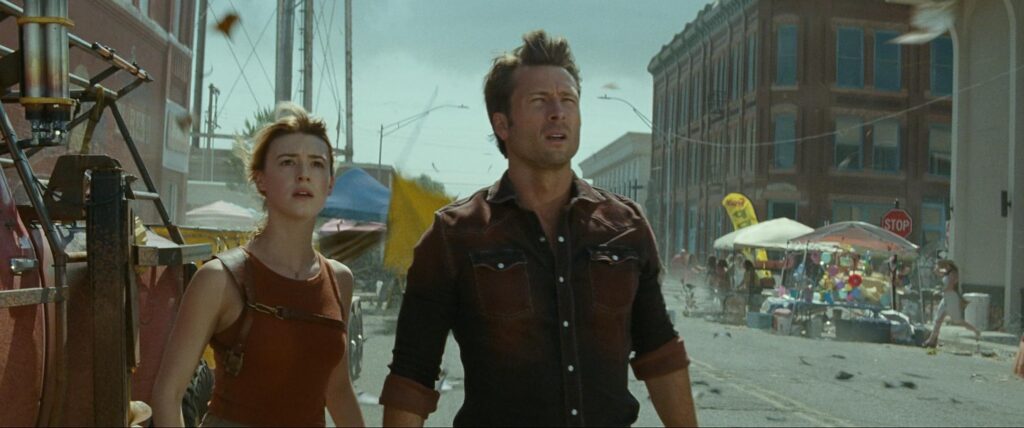
Alex McPherson is an unabashed pop culture nerd and a member of the St. Louis Film Critics Association.

